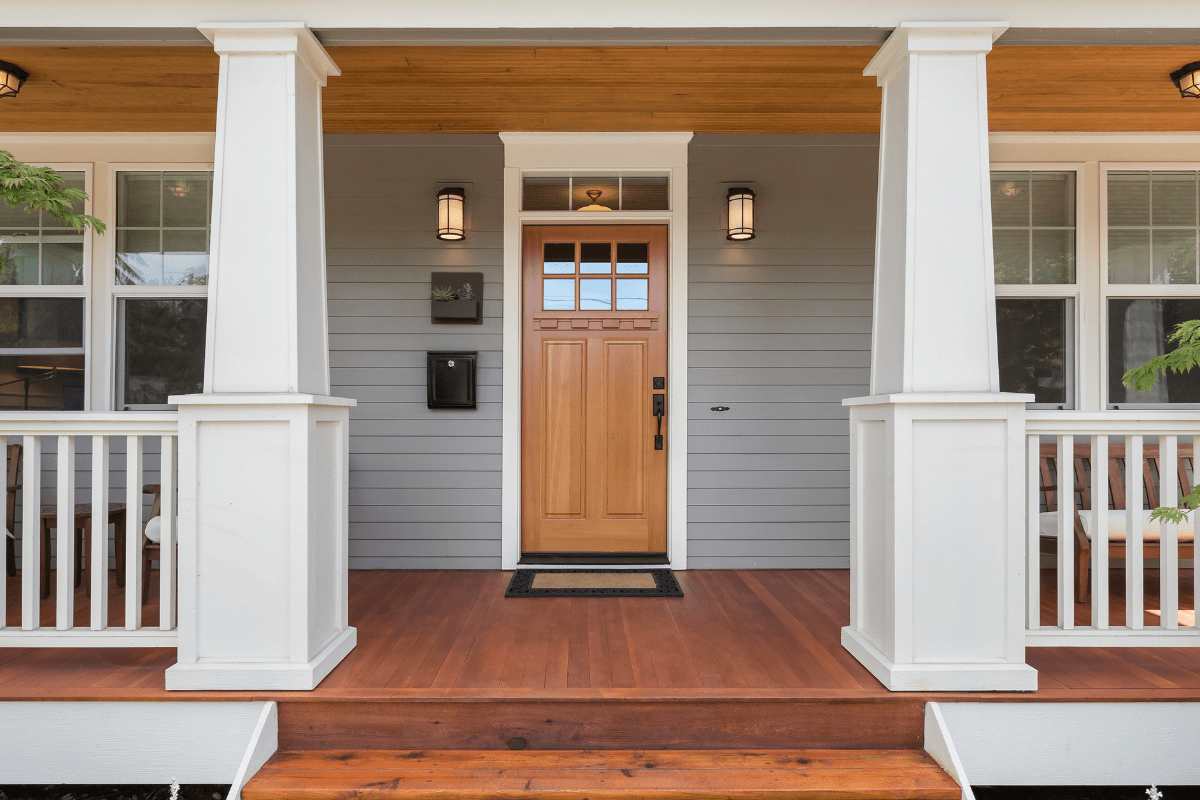Washington weather can't decide if it wants to drown you or burn you, and your home maintenance costs follow the same bipolar pattern. But while you can't control whether you're dealing with atmospheric rivers or wildfire smoke this week, you can absolutely control whether you're using the dozens of programs designed to keep your money where it belongs… in your pocket, not your utility company's shareholders' yacht fund.
Heat pump rebates that'll make your accountant weep tears of joy
Here's something that sounds too good to be true but isn't: Washington homeowners can get up to $11,000 off a new heat pump system by playing the rebate game like a pro. Yes, you read that right… eleven thousand dollars.
The magic happens when you combine multiple funding sources. If you're a Puget Sound Energy customer, you can stack their heat pump rebate ($1,500-4,000), the federal tax credit ($2,000), and if you qualify income-wise, the HEAR program funding ($5,000). It's like Black Friday, but for your heating system.
Seattle City Light customers aren't left out in the cold either. If you're ditching that old oil furnace (and honestly, why haven't you already?), they'll hand you a $2,000 base rebate plus another $4,000 if you're in the moderate-income bracket. That's enough to make switching from oil heating feel less like a financial burden and more like winning a small lottery.
The secret sauce: timing and paperwork
Here's where most people mess up: you need to apply and get approval BEFORE you buy anything. I know, I know… paperwork is about as fun as watching paint dry in Seattle humidity. But trust me, spending an hour on applications beats spending an extra $5,000 on equipment.
Tacoma Power sweetens the deal even more with 0% interest loans up to $14,000. That's right, free money to borrow. At this point, NOT upgrading your heating system is like refusing free samples at Costco.
Contact numbers you'll actually need:
- King County weatherization: 206-684-0244 (Seattle)
- Surrounding areas: 206-214-1240
- Commerce HEAR program: commerce.wa.gov/energy-incentives
Washington already has the third-lowest electricity costs nationally at 12-13 cents per kWh, which is 21% below the national average. But hey, why stop at "pretty good" when you can achieve "ridiculously cheap"?
Property taxes: the relief you didn't know existed
If property taxes make you consider moving to a cardboard box, you're not alone. Washington ranks 11th highest nationally for property taxes, but here's the plot twist: there are so many exemptions and programs available that you might be overpaying by thousands.
The senior citizen and disabled person exemption is the heavyweight champion of tax savings. It literally freezes your property value at the year you first qualify and exempts you from those pesky excess levies. Income limits vary by county… King County lets you earn up to $84,000, while most counties cap it at $52,000. Veterans with 80% or higher service-connected disabilities get even more benefits, with disability compensation excluded from income calculations.
Playing the property tax game like a boss
Want to reduce your assessed value by 50-90%? Current use taxation programs are your new best friend. The Public Benefit Rating System in King County basically pays you to be environmentally friendly. Got 5-20 acres? You only need $200 per acre in annual farm income to qualify for agricultural designation. That's like, what, selling eggs to three neighbors?
The three-year remodeling exemption shields 30% of your pre-improvement value from taxation. Planning to build a granny flat? Now's the time.
Don't want to pay property taxes right now? The deferral program lets you postpone payment at just 5% simple interest, and you only pay when you sell. King County's income limit for this reaches $88,998… significantly higher than the exemption limit. It's like a reverse mortgage, but without the sketchy late-night commercials.
Pro tip for property tax appeals: You have 60 days after getting your assessment notice to file an appeal. Focus on comparable sales data and specific valuation errors. Yes, professional help costs $500-1,500, but successful appeals often recover several times that amount.
Important deadlines to remember:
- Property tax exemptions: December 31
- Appeal window: 60 days
- Deferral applications: Rolling basis
Insurance shopping: why bundling is costing you money
Here's a truth bomb that'll make insurance agents squirm: in Washington, bundling your home and auto insurance often costs MORE than buying separate policies. I'll wait while you pick your jaw up off the floor.
The numbers don't lie. Separate policies average $1,580 while bundled policies average $1,828. That's right, you're paying a $248 "convenience fee" for bundling. It's like paying extra for a combo meal that costs more than ordering items separately.
Mutual of Enumclaw offers the lowest standalone rates at $857 annually. State Farm gives the biggest bundle discount at 22%, saving about $660, but you need to do the math for your specific situation. Don't just assume bundling saves money… this isn't Costco.
Discounts that actually matter
Want to slash your premiums? Here's your checklist:
- Security systems: 15% discount
- New roof: 11% savings
- Impact-resistant roofing: up to 35%
- System upgrades: 13% reduction
The claim-free discount ladder is worth climbing too. You'll get 5% off after three years, 6% after five years, and 8% after ten years of keeping your claims to yourself. It's like a loyalty program, but for not using your insurance.
Living in earthquake country means considering coverage that costs $3-15 per $1,000 of coverage value. Wood-frame homes pay half what brick homes do, which finally gives us stick-built folks something to brag about. Given Washington's 1,000+ annual earthquakes, it's probably worth it despite the 10-25% deductibles.
Need help navigating insurance issues? The Insurance Commissioner's office (800-562-6900) offers free assistance. They're like having a lawyer friend, but one who actually returns your calls.
Climate-specific maintenance that prevents wallet-draining disasters
Washington's split personality weather requires a split personality maintenance approach. Western Washington gets 150+ rain days annually, while Eastern Washington worries more about wildfires than water damage. Both climates can destroy your bank account if you're not prepared.
Western Washington: winning the war against water
Moisture is the enemy, and it's winning if you're not actively fighting back. Spring moisture inspections cost nothing if you DIY, compared to $200-400 for a professional. But ignore moisture issues, and you're looking at $3,000-12,000 in remediation costs. That's a pretty expensive way to learn about home maintenance.
Your moisture-fighting arsenal should include:
- Keep indoor humidity below 60%
- Grade foundation properly (6 inches/10 feet)
- Extend downspouts 6+ feet
- Clean gutters twice each fall
That last one is crucial. Clean them once in early autumn and again after the leaves finish their dramatic death spiral. DIY costs maybe $50 in supplies and an afternoon of cursing at your ladder. Professional cleaning runs $150-300, which starts looking pretty reasonable when you're teetering on a roof.
Roof moss isn't just ugly… it's expensive. Professional moss removal costs $250-600, while DIY runs $30-100. Install zinc strips for prevention, and schedule any exterior work for July-August when you might actually see the sun for more than five minutes.
Eastern Washington: fireproofing your castle
If you're living on the dry side of the mountains, your maintenance priorities flip completely. Creating defensible space isn't just smart… it might save your home and your insurance coverage.
The zones break down like this:
- 0-5 feet: Zero combustibles allowed
- 5-30 feet: Fire-resistant plants only
- 30-100 feet: Increased maintenance zone
Replace those pines and firs with manzanita, fireweed, and turfgrass. Yes, professional defensible space creation costs $1,500-5,000, but that's pennies compared to rebuilding your entire home.
Don't forget about the dust. Monthly HVAC filter changes are non-negotiable in agricultural areas, and professional tune-ups ($150-300) should happen every spring and fall. Your lungs and your furnace will thank you.
Government programs that actually deliver
The State Home Electrification and Appliance Rebates (HEAR) program is distributing $77.6 million to households earning up to 150% of Area Median Income. It launches summer 2025, so mark your calendar and set seventeen reminders.
First-time homebuyers, gather 'round for some good news. The Washington State Housing Finance Commission (800-767-4663) offers below-market mortgages plus up to $15,000 in down payment assistance at 1% deferred interest. But wait, there's more! Local programs stack on top:
Location-specific assistance maximums:
- Seattle: $76,000
- King County: $45,000
- Tacoma: $60,000
- Veterans statewide: additional $10,000
The weatherization assistance program serves households up to 80% AMI (about $70,000 for a single person in Seattle). They'll insulate, air seal, and replace your HVAC system for free. The program has leveraged $188 million over 23 years, proving government programs sometimes actually work.
Solar: still shining bright in 2025
Despite what your pessimistic neighbor says, solar incentives remain robust. The 30% federal tax credit runs through 2032, and Washington adds sales tax exemption for systems under 100kW plus permanent property tax exemption for solar equipment.
Average system cost drops from $13,025 to $9,118 after the federal credit. PSE customers get net metering at 1:1 rates through 2025, though rates might change after that. If you're thinking about solar, sooner beats later.
Historic property owners get their own special treats: 20% federal tax credits on rehabilitation costs for income-producing properties, plus 10-year property tax exemptions on improvements exceeding 25% of building value.
Success stories that prove this stuff works
The numbers don't lie. King County's C-7 New Energy Partnership engaged 100,000 residents who collectively saved $525,000 in just six months. That's enough electricity to power 435 homes annually, achieved mostly through behavioral changes. No fancy equipment required… just paying attention to your usage.
Washington State's energy performance contracting has invested $1.5 billion in public facilities since 1986, generating $49 million in annual savings. The 2021 energy code achieves 56% whole building energy reduction compared to 2006 standards, targeting 70% by 2031. Translation: new homes use less than half the energy of those built 20 years ago.
Your action plan starts now
Stop treating these programs like homework you'll do later. Property tax exemption deadlines hit December 31st, and every month you wait is money left on the table. Schedule that energy audit this week, not "someday." Shop insurance separately instead of blindly renewing that bundle.
If you're in Western Washington, check your gutters and moisture levels before the next atmospheric river arrives. Eastern Washington folks, create that defensible space before fire season, not during it.
Save these contact numbers in your phone right now:
- Commerce energy programs: 360-725-4000
- Your county assessor (Google it)
- Insurance Commissioner: 800-562-6900
With electricity costs already 21% below national average and this buffet of programs available, Washington homeowners who take action can achieve the lowest total housing costs in the nation. The only thing standing between you and thousands in savings is that stack of applications on your kitchen counter. Time to stop procrastinating and start saving.





